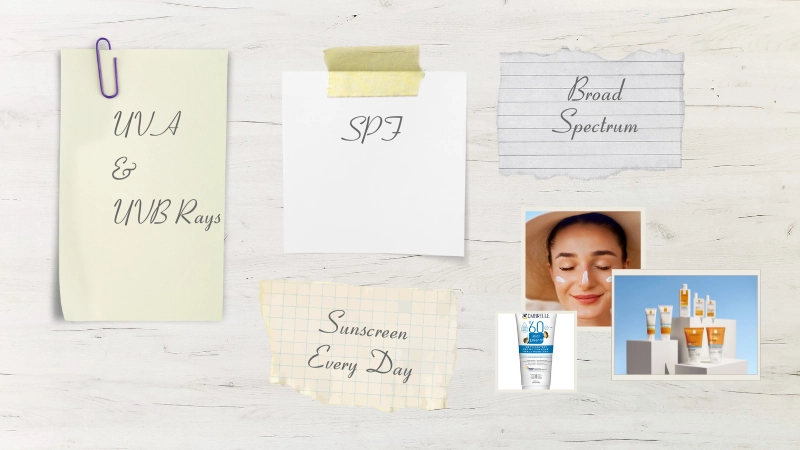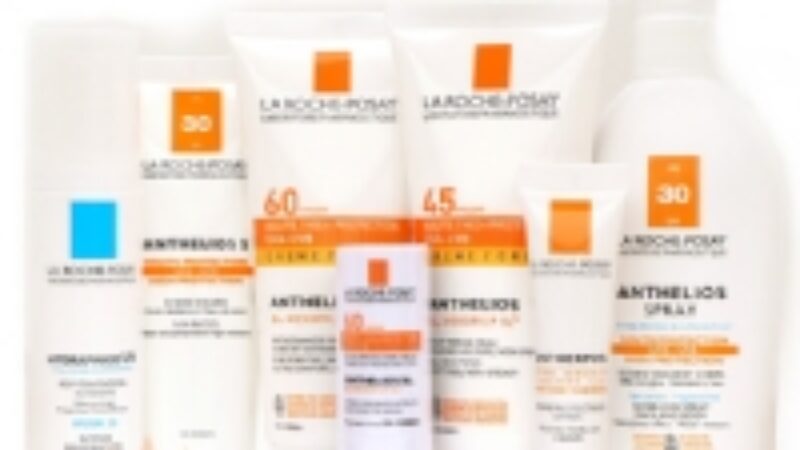Dare we dream that warmer weather is just around the corner? If you’re anything like me, you’re ready to say goodbye to the heavy winter gear and break out the light, breezy clothing that signifies that spring has finally fought off winter. As warmer weather beckons, it’s a good time to bring out our sunscreen cheat sheet. Even though many of us think of sunscreen as a summer-only ritual, it’s something that should be used year-round to protect our skin against the sun’s UV rays, which are the leading cause of skin aging and a major contributor to skin cancers.
Here’s a quick run down which will help get you ready to incorporate sunscreen into your daily routine now, before warmer temperatures arrive.
1. All About UV Rays
The sun emits 3 main types of ultraviolet (UV) rays – UVA, UVB and UVC. UVC rays burn off before they reach the earth’s atmosphere so the ones we are concerned with when it comes to our skin health are UVA and UVB rays.
UVA rays are deep penetrating rays that disrupt collagen and elastin and are linked with premature aging. They also contribute to the development of many types of skin cancers. UVB rays don’t penetrate as deeply and are primarily responsible for sunburns.
While UVB rays are more prevalent in the summer, UVA rays abound year round and can pass through clouds and windows, further supporting the need for sunscreen on a daily basis regardless of the weather.
2. Physical vs Chemical Sun Filters
Sunscreen filters are classified as two main types – physical or chemical. Physical sun filters work by acting as a physical shield against UV rays. Titanium dioxide and zinc oxide work by sitting on the skin’s surface and deflecting harmful rays to prevent them from damaging your skin. Chemical filters are ingredients that work by interacting with your skin’s surface to absorb UV rays, which are then converted and released as harmless energy.
Both types of filters are effective and it is possible for sunscreens to contain both physical and chemical sun filters in one product. Physical sun filters tend to better tolerated by most people and are ideal if your skin is sensitive.
3. What does SPF Mean?
SPF= Sun Protection Factor. This rating system, developed in 1962, measures the length of time a sunscreen will protect you from the burning UVB rays compared to how long it would take you to burn with no protection whatsoever.
For instance, if you typically burn in 10 minutes, an SPF 30 product will deliver protection for 10 minutes x 30, so 300 minutes. However, this is very much dependent on applying adequate amounts, something most of us do not do. Another thing to keep in mind: reapplying after the recommended 2 hours does not extend your protection time by another 300 minutes. You are simply maintaining the same level of protection for the same amount of time. The SPF rating does not give any indication of the amount of protection afforded against UVA rays (those responsible for skin aging).
In order to ensure that you are getting a sunscreen that delivers both UVA and UVB protection, look for products labelled as “Broad Spectrum”, which means that it shields against both UVA and UVB rays.
4. How to Apply Sunscreen
Experts tell us that in order to maximize our SPF protection, to aim for one ounce of sunscreen (the size of a shot glass) for the entire body. For the face, aim for 1/4 teaspoon. It’s better to put on more than less. You can wait a few minutes and then reapply to ensure that you get spots you may have missed the first time around.
Don’t forget about commonly neglected areas including the lips, the part in your hair, ears, décolleté, back of the neck, under the chin, tops of the feet, hands, backs of the knees.




